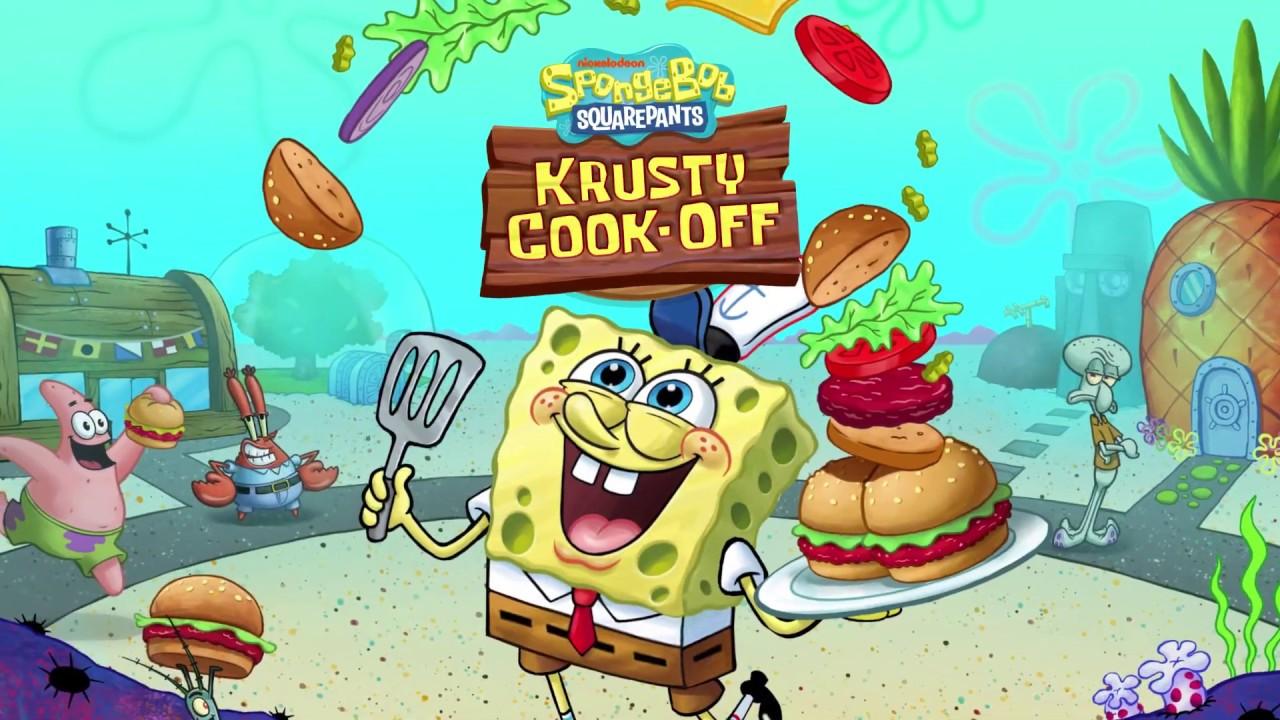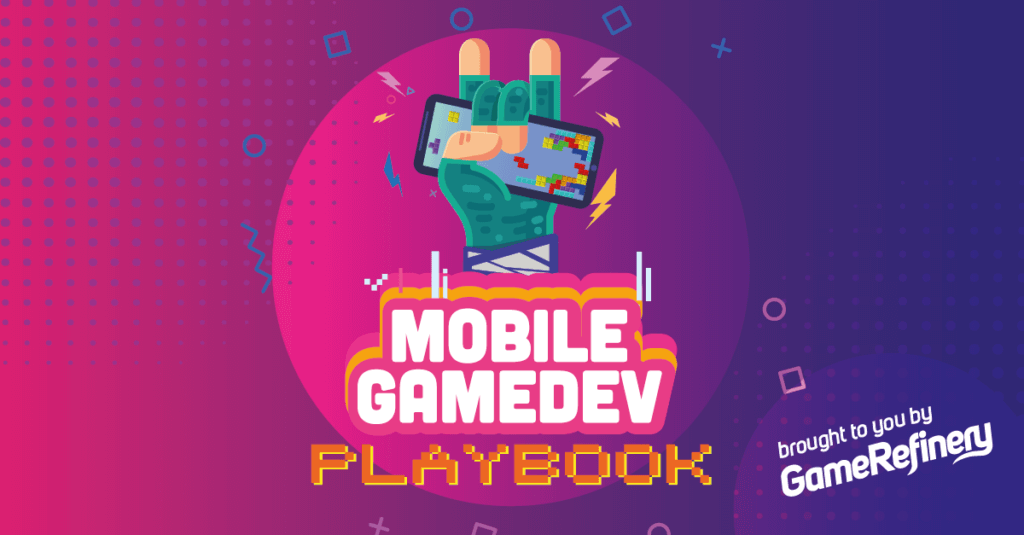Time management games have been around for a while already. The first big hits from the genre for modern mobile devices like Diner Dash or Cooking Fever are already over 10 years old, but the genre is still very much alive with a fresh entry into the market in the form of Spongebob: Krusty Cook-Off.
Market overview
At the moment, there are ten time management games in the top grossing 500 US iOS. A commonality with all of these games is that they are ALL based on cooking/food. Games in the genre that are NOT based around a cooking theme are scarce, and none of them has been particularly successful.
Time management games in top grossing 500 US iOS (GameRefinery’s Market Explorer Tool)
Four of these games released within the past year:
Virtual Families: Cook Off, Gogii Games Corp.
Cooking Frenzy – Crazy Chef, DragonPlus
Diner Dash Adventures, Glu
and then the latest entry, the subject of this blog post, Spongebob: Krusty Cook-Off , Tilting Point.
Time management games released less than 365 days ago (GameRefinery’s Market Explorer Tool)
Deconstructing Spongebob
Spongebob: Krusty Cook-off takes you to the depth of Bikini Bottom and assigns you to run several different restaurants. The actual core gameplay is similar to, for example, Cooking Craze or Cooking Fever where you tap everything for action, so no swiping/dragging your finger required. Check out the gameplay video below for a better understanding.
The core loop
The core loop of the game is simple. You complete time management levels in which you cook and serve food for different customers. From completing levels, you earn soft currency (gold), which can then be used to upgrade kitchen appliances (more frying pans, upgraded ingredients etc. to help you in the core action layer), interior upgrades and decorative items. Each restaurant has a set number of completable story levels and after you’ve finished those, the next restaurant opens.
After players complete the story levels for a restaurant, they can keep on playing randomly generated “infinity levels.” Why do you want to do that then? The game incentivizes players to buy all upgrades/decorations for each restaurant and keep on playing at “completed restaurants” by using two mechanics built for that exact purpose.
1. Soon after completing the story levels, players unlock the social competition feature Championships. It’s a weekly competitive tournament for players that have finished their restaurant. It puts players who have played the most in a specific restaurant in a specific timespan (scored the most points called Smiles) head to head in a competition. Rewards, for example, include premium currency (crystals) and boosters. Each restaurant has its own Championship.
2. Each upgrade purchase gives you Fame. There is a Fame meter for each restaurant illustrating the amount of stuff purchased in that specific restaurant. There are several reward thresholds for each Fame meter and each of those thresholds reward you with e.g. gems (premium currency) and different consumable boost items. In other words, even though players have completed the story levels, they have an explicit incentive to keep upgrading all kitchens.
Spongebob: Krusty Cook-off’s Current event framework
Krusty Cook-off was only launched recently, so we haven’t seen any major live events yet, but it currently runs several different types of recurring events (on top of the weekly Championships mentioned earlier).
1. Rush Events
Simple events where players have to do certain things (such as make combos, serve dishes etc.) multiple times and are rewarded for reaching certain thresholds.
2. Serve Streak Challenges
This event type is based on winning streak events that are becoming ever more popular among casual games. For example, many of the top Match3s and other level-based casual games already use these, and it has been one of the event types that has seen significant growth in its utilization recently.
In this adaption, you need to complete the main progression levels in a row without losing. In traditional “win streak” events players get rewarded free boosters at the start of a level depending on their streak. But in Spongebob’s case, it’s all about reaching reward thresholds and choosing if you want to a) end your run or b) risk it and push forward.
For example, when you reach the first rewards threshold (5 wins in a row), you can back out and claim a small reward. But if you want to try to continue your streak for even greater rewards, you can keep on playing. However, if you lose a level, you’ll lose all of the rewards that you had gained thus far. This kind of loss aversion-based mechanic incentivizes players to use even more consumable items and buy continues if they fail so that they would not lose their streak.
This mechanic kind of combines Match3 win streaks to backing out mechanics familiar from Tower mechanics such as Angry Birds 2.
3. Food Truck Challenge
This event is also based on streak mechanics, but this time the levels are separate from the main progression, i.e. there are specific event levels you need to complete. Moreover, you’re not cooking in your “own kitchens” so upgrades etc. don’t matter. To claim the rewards, you need to complete all five levels without losing, so there is no “backing out” mechanics involved in this case.
Spongebob: Krusty Cook-off Monetization
Spongebob: Krusty Cook-off goes both for IAPs and ads for its monetization model.
IAP
- Consumable boosters in the core gameplay (e.g. Cooking speed or extra time after failing)
- Upgrading kitchen appliances/decorating the restaurant
- Gacha for decorative clothing. Players can buy decorative accessories for the characters walking around the restaurants (Spongebob, Patrick, etc.). These don’t have any impact on gameplay.
Ads
- Several placements of rewarded videos (premium currency, get more energy, skip upgrading waiting times, etc.)
- Forced ads (removed after the first IAP)
Spongebob: Krusty Cook-off Performance review for US iOS
Last but not least, let’s take a glimpse at the game’s performance so far. The game was launched on May 12th, 2020, so at the time of writing (June 25th, 2020) it’s been around for about a month and a half. NOTE that revenue and download numbers here concern only US iOS and IAPs only. Ad revenue is not taken into account.
Having a super popular IP helped the game to gain quite high launch download numbers. The game has generated about 1,85 million DLs and bit over $1 million in revenue, rev/DL sitting in around $0,56 in US iOS.
(A sneak peek of our upcoming revenue updates to the service)
Spongebob: Krusty Cook-off revenue in US iOS (GameRefinery Service)
Spongebob: Krusty Cook-off downloads in US iOS (GameRefinery Service)

Spongebob: Krusty Cook-off cumulative revenue and downloads in US iOS 44 days after the launch
Comparison
Let’s take a look at the two current biggest competitor games in the subgenre: Diner Dash Adventures and Cooking Diary and check how their launch performance was for the same time period (44 days) after launch.
Diner Dash Adventures generated about 820k downloads and $2,6 million in revenue with over $3 per DL in the same period after the launch.
Diner Dash Adventures’ cumulative revenue and downloads in US iOS 44 days after the launch
Cooking Diary generated about 300k in downloads and $390k in revenue in the same period with rev/DL sitting in $1,3.
Cooking Diary’s cumulative revenue and downloads in US iOS 44 days after the launch
In terms of downloads, there’s no question which of these games had the best launch. With its strong IP, Spongebob was able to gather loads of downloads and beat the rival games easily in that regard.
Monetization wise though for example Diner Dash made over double the IAP revenue compared to Spongebob despite the much, much lower download numbers.
Cooking Diary had both the smallest revenue and download figures during its initial launch. But since then, with its active live ops and feature additions, it has actually clinched the top spot in the subgenre in terms of revenue in the US.
We’re only scratching the surface in this post, as we’re not going to analyze the differences in the mechanics of these two games compared to Spongebob. Still, one interesting thing to notice is Spongebob’s much heavier focus on ad monetization as well, which isn’t reflected in the IAP revenue numbers. Spongebob has implemented many more different rewarded ads, forced videos, etc. than its competition.
Comparison of ad-features in Game Comparison tool (GameRefinery Service)
In conclusion
Spongebob: Krusty Cook-off is a great time management game. In my opinion the Spongebob IP is used efficiently and it fits into a cooking game like a ‘cooking’ glove. That being said, its launch feature set is still pretty light compared to its main competitors. To stay among the top time management games after the launch’s initial download spike, retain its users in the long run and to improve that rev/DL, it definitely needs a bit more (crab patty) meat around its bones. Whatever happens, we at GameRefinery will be closely following how Spongebob: Krusty Cook-off evolves in the future and you can check out all updates to the game in our service.
Log in here to the GameRefinery tool, see feature deconstructions, and implementation screenshots from thousands of games across the market!
If you enjoyed reading this post, here are a few more you should definitely check out:




































